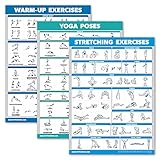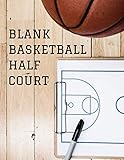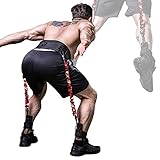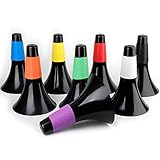Introduction
Basketball is more than just a game; it’s a platform for demonstrating teamwork, skill, and athleticism. Whether you’re an aspiring player aiming to make the varsity team or a coach dedicated to elevating your squad’s performance, understanding how to conduct effective basketball practice is fundamental. This comprehensive guide will walk you through proven tips and strategies that will maximize your practice sessions, improve individual skills, and empower your team to reach new heights in the upcoming season.
Key Takeaways
- Pre-practice preparation sets the foundation for success.
- Establish clear goals using the SMART criteria.
- Incorporate cardio, strength training, and agility drills to enhance performance.
- Foster a positive team culture to boost morale.
Pre-Practice Preparation
Before the whistle blows, the groundwork for a successful practice must be laid. Pre-practice preparation sets the stage for what’s to come.
Setting Goals and Expectations
The initial step is to establish clear, achievable goals. Whether it’s perfecting shooting form, enhancing defensive footwork, or improving teamwork, having specific objectives gives everyone direction. You might consider using the SMART criteria—setting goals that are Specific, Measurable, Achievable, Relevant, and Time-bound. For example, setting a goal for players to shoot at least 100 free throws each week can offer measurable progress and accountability.
Developing a Practice Schedule
Once goals are established, organizing a structured practice schedule is critical. Consistency is key in basketball practice. Let’s say you decide to practice three times a week—each session should have a balanced focus on skill development, strategy, and conditioning. A suggested weekly outline could look something like this:
- Monday: Fundamentals (Shooting, Dribbling)
- Wednesday: Game Situations (Fast Breaks, Half-Court Set Plays)
- Friday: Team Defense and Conditioning
Keep flexibility in mind for adjustments while sticking to a routine.
Creating a Positive Team Culture
A thriving team culture fosters a positive atmosphere where players feel motivated and supported. Start building that culture during practice by emphasizing communication and encouragement. Engaging in team-building activities or icebreakers before diving into drills can promote camaraderie. For instance, consider utilizing games like Team Building Games for Work Adults to energize the group and encourage collaboration. Celebrating small victories, such as perfect execution of a drill, contributes to a motivational environment.
Main Section 1: Fundamentals and Skills
Mastering the fundamentals is the backbone of effective basketball practice. A strong foundation not only enhances individual skill sets but also translates into improved team synergy on the court.
Drilling Layups and Post Moves
Every player needs to understand how to score effectively. Layups and post moves are essential components of offensive strategy. Break players into smaller groups and work on layup variations and footwork drills. For instance, practicing different layup angles or utilizing both hands can expand a player's scoring options. A fantastic resource for drills is 201 Drills for Coaching Youth Basketball which provides a comprehensive selection of practice techniques. Additionally, including a timed challenge, where players must hit a certain number of layups in a minute, can generate excitement and a sense of urgency.
Practicing Jump Shots and Three-Ball
The modern game increasingly demands versatility in shooting, particularly from beyond the arc. Ensure that players are comfortable with both stationary and moving jump shots. To help standardize shooting form, consider the HOOPSKING Bullseye Basketball Shooting Training Aid, which prevents the player's elbow from going past the perfect 90-degree angle, helping develop correct muscle memory. This tool not only enhances accuracy but also builds confidence over time.
Defending the Ball and Screens
Defensive skills are just as critical as offensive ones. Defense is often what turns a game around, so working on ball defense, as well as defensive mechanics for when opponents set screens, is essential. Introducing drills that emphasize body positioning and footwork will be invaluable. A great resource for coaches is Survival Guide for Coaching Youth Basketball, which covers essential strategies and techniques for defending effectively.
Main Section 2: Game Situations and Strategies
Every practice should include game situations, so players can learn to adapt to real-time challenges.
Working on End-of-Game Scenarios
Simulating end-of-game situations during basketball practice helps players understand dynamic decision-making under pressure. Use a three-minute drill where both teams operate under a game scenario, focusing on strategic execution for the final minutes of play, whether it’s holding a lead or closing a gap. For those looking to deepen their knowledge on last-minute strategies, Time to Win (Play the Game #3) offers insights into comeback strategies.
Practicing Fast Breaks and Transition Offense
Transitioning from defense to offense in a fast break presents a significant opportunity for scoring. Design drills that enhance players’ abilities to move quickly and efficiently. A popular drill is the “Shell Drill,” where players quickly transition from defense to offense, focusing on timing and spacing. For drills focusing specifically on the fast-break attack, consider the book Coaching Basketball's Fast Break Attack, which provides practical approaches to mastering this vital part of basketball.
Improving Half-Court Sets and Play Execution
Understanding half-court sets is vital for orchestrating effective offensive plays. Begin with a breakdown of common plays and then practice them slowly before speeding them up. For structured guidance, the Coaching Basketball Successfully book provides expertise on play execution and strategies that coaches can implement to enhance their team's performance.
Main Section 3: Team Defense and Help Defense
Mastering team defense is essential for success in any basketball team.
Shoring Up Defensive Fundamentals
Defensive fundamentals should be a recurring focus. This includes stance, foot positioning, and anticipation. Players should undergo drills that emphasize these principles, reinforcing staying low and keeping eyes on their opponents or the ball.
Anticipating and Reacting to Screens
Screens can often disrupt defensive flow. Teaching players how to anticipate and react quickly is critical. Conduct drills mimicking common screening situations, allowing players to practice navigating through or switching effectively. The Mastering Pick-and-Roll Defense guide offers comprehensive coverage of relevant techniques and drills.
Rotations and Recoveries in Help Defense
No defense can succeed without proper help and recovery. Teach players the importance of covering for each other, particularly when one player gets beaten. Use scenarios that require players to read the floor and react swiftly, reinforcing the concept of “ball-you-man” and getting back into position.
Main Section 4: Conditioning and Physical Training
Physical fitness plays an undeniable role in basketball performance. A well-conditioned athlete can maintain high energy levels throughout the game.
Building Endurance with Cardio Exercises
Integrate various cardio exercises into practice, such as sprinting drills that simulate game scenarios (like a 4-corner sprint challenge where players sprint to four different points). Aim for at least 15-20 minutes of dedicated conditioning each practice. Resources like Complete Conditioning for Basketball can provide specific exercises geared towards building endurance.
Strengthening Core and Leg Muscles
Stronger muscles contribute to better performance and injury prevention. Focus on core workouts (like planks or Russian twists) and leg strengthening exercises during practice. The Vertical Jump Trainer Leg Strength Ankle Resistance Bands Set can greatly enhance vertical leap abilities, making it an essential tool for basketball players aiming to improve their game.
Improving Agility and Quickness
Agility drills, such as ladder drills or cone quickness courses, can enhance foot speed and reaction times. Utilizing the GHB Pro Agility Ladder Agility Training Ladder during training can significantly benefit players aiming to enhance their agility, balance, and overall performance.
Main Section 5: Mental Toughness and Team Chemistry
Mental resilience is just as crucial as physical skill in basketball. Cultivating it can lead to improved performance in high-pressure situations.
Building Confidence through Positive Reinforcement
Encourage players consistently. Positive reinforcement helps boost spirit and confidence, even during mistakes. Consider setting aside a portion of practice to acknowledge players’ hard work and progress. For a hands-on approach, the JarThenaAMCS Sport Wooden Reward Jar can serve as an engaging way to motivate players and recognize achievements.
Developing Trust among Team Members
Team trust often translates into better on-court synergy. Engage in team-building exercises that require trust, such as “trust falls” or other group activities where players rely on one another.
Fostering a Winning Culture and Mindset
Encourage a mentality that embraces effort, learning from failures, and maintaining a competitive edge. Remind players that winning is a byproduct of persistent hard work, growth, and unity. For mental toughness, explore concepts from Mental Toughness For Young Athletes which includes mindset exercises tailored for competitive sports.
Frequently Asked Questions
Q1: How often should we practice?
Balancing practice frequency and player energy is crucial. Generally, teams can benefit from practicing 3-4 times a week, allowing adequate rest to prevent fatigue and injuries.
Q2: What are some effective warm-up exercises?
Dynamic warm-ups, like high knees, arm circles, and lunges, are beneficial. Aim for about 10-15 minutes of dynamic movements to prep muscles for activity. Utilizing resources such as the Palace Learning 3 Pack - Warm Up Exercises + Stretching Exercises + Yoga Workouts can provide useful visuals and structured activities to enhance warm-up routines.
Q3: How can we improve our team's communication?
Incorporate communication-based drills during practice, such as call-and-response exercises during scrimmages or giving players specific roles that require them to vocalize during gameplay. Consulting sources like Great Teams: 16 Things High Performing Organizations Do Differently can help teams understand effective communication strategies further.
Q4: What are some key factors to consider when setting practice goals?
When setting practice goals, consider each player’s skill level, team dynamics, overarching objectives for the season, and individual development needs. Goals should prioritize improvement while remaining challenging.
Q5: How can we balance individual development with team cohesion?
To blend individual growth with team dynamics, allocate specific times during practice for both personal drills and group activities. This way, players improve in their areas while also functioning collectively.
Conclusion
Effective basketball practice is a nuanced blend of preparation, skill building, game situations, physical training, and mental fortitude. By integrating these elements into your practices, you’ll foster an environment that encourages growth, strengthens team cohesion, and propels your players towards success in the competitive world of basketball. Remember, the key to unlocking your team's potential lies in the effort you put into each practice session—making every minute count!











































